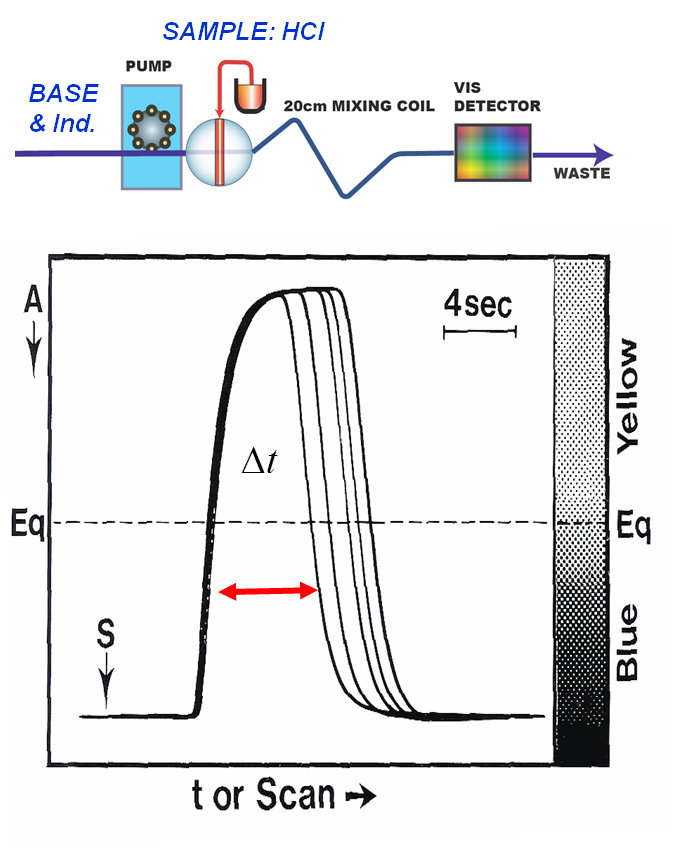Fast Titrations for Process Control
The previously discussed titration can be accelerated by removing the mixing chamber and decreasing the channel volume between injector and detector. Provided there is insufficient radial mixing, due to the shortness of the channel, the conduit will behave like a single tank, producing a limited exponential decay curve. The system will still respond in logC vs Δt fashion, but the linear range will be limited to two decades of C, which is less than obtained with a mixing chamber. The example shows superimposed titrations of HCl (0.01M, 0.02M, 0.04M, 0.06M, and 0.1M) with 0.001M NaOH using bromothymol blue as indicator. Sample volume 30mL,flow rate 1,46mL/min (Ramsing 1981, Ruzicka 1989). The same system was also used for EDTA titration of Zn with xylenol orange as indicator, and for redox titration of iodine with thiosulphate with starch indicator.
1.3.6.

By replacing the peristaltic pump with a syringe pump, or by reconfiguring into SI mode, the system becomes robust, and thus suitable for process control applications.
A.U. Ramsing, J. Ruzicka and E.H.Hansen, Anal. Chim. Acta. 129(1981)1.
J. Ruzicka and E.H.Hansen. Flow Injection Analysi 2nd ed. Willey 1989. p235- 237









